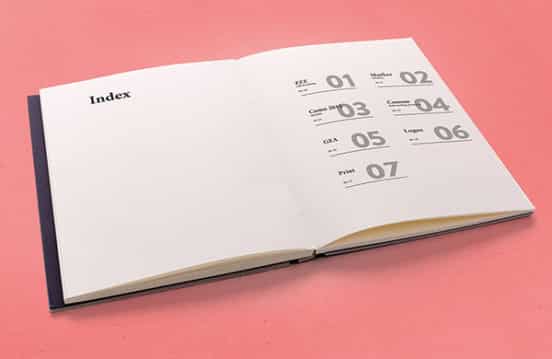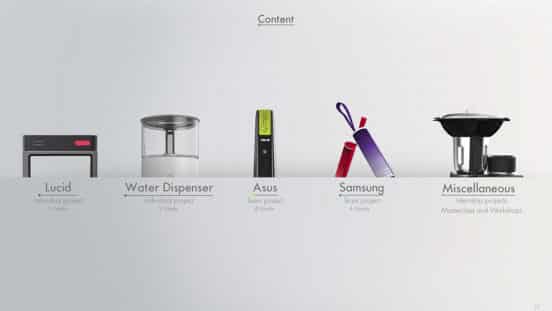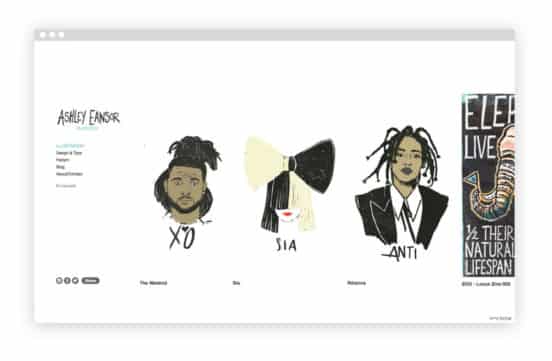1. All Designers – Create an Index
Whether you have a physical or online portfolio, it’s important to have an index to make it more browsable. No one wants to flip pages or keep hitting the browser’s back button to revisit an image. Index’s also let the potential client or prospective employer cut to the chase by zeroing in on exactly what they want to see.
2. Industrial Design – Show the Process
Industrial design portfolios can be tricky. The best example of a person’s abilities is the finished product. However, an industrial designer is not trying to sell products. And the final product can sometimes appear deceptively simple. That’s why industrial designers should focus on showing the steps it took to achieve the final result.
3. Industrial Design – Projects
Showing projects is the best way to articulate your abilities and vision. Stay away from small sections or snippets of a project. It’s best to show how you rendered one project to completion. Also tailor your projects to the business you are pitching. It doesn’t make sense to churn through dozens of projects when you have two or three that are directly responsive to the business’ needs.
4. Illustrators – Provide Context
Showing your illustrations and designs is a must, but it’s more helpful to show the context for the illustrations. How did you interpret your client’s creative brief in achieving the final result. You have a specific style, but ultimately it is shaped by what the client wants. A good way to get a job is to show how you translated the desires of the client into the finished illustration.
5. Fashion – Get Great Photos
Constructing a fashion design portfolio can be daunting. It’s hard to convey the texture, color, and movement of a well-designed garment. Many fashion designers try to save money by taking their own photographs of their clothing. Unless you are highly skilled, this often fails. You can barter with a photographer to get great photos at a lower rate. Enlist your friends to help with the modeling. But whatever you do, don’t skimp on the photos.
6. Photography – Curate
It’s easy to create a photography portfolio with dozens or hundreds of images, but that is rarely necessary or helpful to a professional photographer. Curate your images into your best work. This will include many of your personal favorites, but not all of your favorites represent your best work. Seek opinions of others. Consider your audience, and also what you want to say about your style. Think about storytelling when culling down the photos.
7. All Designers – Create an Online Portfolio
I’m a traditionalist, so I prefer a hard copy of the portfolio. But in the modern era, you absolutely must have an online portfolio (and no, a Facebook page won’t cut it.) Invest in a sleek online portfolio that showcases your best work. If possible, get a personalized domain with your name or the name of your business. The website functions as a full-time sales person for your business, since it can be found by anyone at any time. It’s also a great way for potential clients to revisit your work when you aren’t sitting in the same room.
















